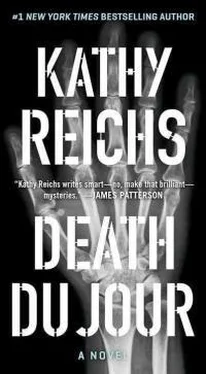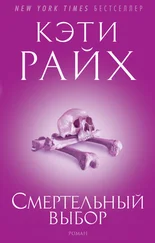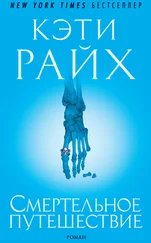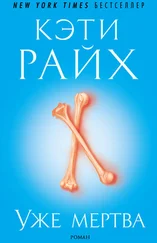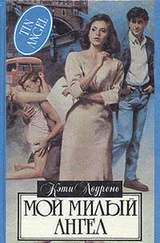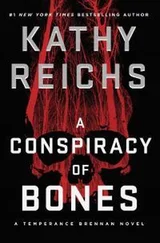I looked behind me, down the drive. Across the road sat a similar chalet, this one trimmed in red and blue. A man and woman stood in front, arms folded, mittened hands tucked under armpits. They watched silently, squinting into the morning glare, their faces grim below identical orange hunting caps. The neighbors who had reported the fire. I scanned the road. There were no other homes within visual distance. Whoever thought she had heard muffled booms must have good ears.
LaManche and I started toward the house. We passed dozens of firefighters, colorful in their yellow suits, red hard hats, blue utility belts, and black rubber boots. Some wore oxygen tanks strapped to their backs. Most seemed to be gathering equipment.
We approached a uniformed officer standing by the porch. Like the driveway guard, he was Sûreté du Québec, probably from a post in St-Jovite or a nearby town. The SQ, or Quebec Provincial Police, have jurisdiction everywhere off the island of Montreal, except in towns that maintain their own police. St-Jovite would be too small for that, so the SQ had been called, maybe by the fire chief, maybe by the neighbor. They, in turn, had called the arson investigators from our lab. Section d’Incendie et Explosif. I wondered who had made the decision to call the coroner. How many victims would we find? In what condition would they be? Not good, I was sure. My heart stepped up its tempo.
Again LaManche held up his badge, and the man inspected it.
“ Un instant, Docteur, s’il vous plaît ,” he said, holding up a gloved palm. He called to one of the firefighters, said something, and pointed at his head. In seconds we had hard hats and masks. We put on the former, hung the latter over our arms.
“ Attention! ” said the officer, inclining his head toward the house. Then he stepped aside to let us pass. Oh yes. I’d be careful.
The front door was wide open. When we crossed the threshold out of the sunshine the temperature dropped twenty degrees. The air inside felt damp and smelled of charred wood and soggy plaster and fabric. A dark goo covered every surface.
Straight ahead a staircase rose to a second story, to the left and right gaped what must have been the living and dining rooms. What remained of the kitchen was in back.
I’d been to other fire scenes, but few as devastated as this. Charred boards lay everywhere, like debris hurled against a seawall. They crisscrossed on top of tangled chair and sofa frames, angled against stairs, and trellised against walls and doors. Remnants of household furnishings lay in blackened heaps. Wires dangled from walls and ceilings, and pipes twisted inward from their points of attachment. Window frames, stair rails, boards, everything was edged in black icicle lace.
The house was crawling with people in hard hats, talking, taking measurements, photos, and videos, collecting evidence, and scribbling on clipboards. I recognized two arson investigators from our lab. They held a measuring tape between them and one squatted at a fixed point while the other circled, recording data every few feet.
LaManche spotted a member of the coroner’s staff, and began picking his way forward. I followed, snaking between twisted metal shelving, broken glass, and what looked like a tangled red sleeping bag, its stuffing spewed like charcoal innards.
The coroner was very fat and very flushed. He straightened slightly when he saw us, blew a puff of air, pooched out his lower lip, and gestured an upturned mitten at the devastation around us.
“So, Monsieur Hubert, there are two dead?”
LaManche and Hubert were design opposites, like contrasting shades on a color wheel. The pathologist was tall and rangy, with a long, bloodhound face. The coroner was round in every way. I thought of Hubert in horizontals, LaManche in verticals.
Hubert nodded, and three chins rippled above his muffler. “Upstairs.”
“Others?”
“Not yet, but they haven’t finished in the lower level. The fire was much more intense in the back. They think it probably started in a room off the kitchen. That area burned completely, and the floor collapsed into the basement.”
“Have you seen the bodies?”
“Not yet. I’m waiting for clearance to go upstairs. The fire chief wants to be sure it’s safe.”
I shared the chief’s sentiment.
We stood in silence, surveying the mess. Time passed. I curled and uncurled my fingers and toes, trying to keep them flexible. Eventually three firemen descended. They wore hard hats and goggle masks, and looked as if they’d been rummaging for chemical weapons.
“It’s O.K.,” said the last fireman, unsnapping and removing his mask. “You can go up now. Just watch your step and keep the hard hats on. That whole damn ceiling could come down. But the floors look O.K.” He continued toward the door, then turned back. “They’re in the room on the left.”
Hubert, LaManche, and I worked our way up the stairs, shards of glass and charred rubble crunching under our feet. Already my stomach was tightening and a hollow feeling was building in my chest. Though it is my business, I have never grown immune to the sight of violent death.
At the top a door opened to the left, another to the right, there was a bath straight ahead. Though badly smoke damaged, compared with the downstairs, things seemed to be reasonably intact at this level.
Through the left doorway I could see a chair, a bookcase, and the end of a twin bed. On it was a pair of legs. LaManche and I entered the left-hand room, Hubert went to check the one on the right.
The back wall was partially burned, and at places two-by-fours were exposed behind the flowered wallpaper. The beams were charcoal black, their surfaces rough and checked, like the skin on a croc. “Alligatored,” the arson boys would write. Charred and frozen debris lay underfoot, and soot covered everything.
LaManche took a long look around, then pulled a tiny Dictaphone from his pocket. He recorded the date, time, and location, and began describing the victims.
The bodies lay on twin beds that formed an L in the far corner of the room, a small table between them. Strangely, both individuals appeared to be fully clothed, though smoke and charring had obscured all indicators of style or gender. The victim along the back wall wore sneakers, the one on the side had died in stocking feet. I noticed that one athletic sock was partly off, exposing a smoke-stained ankle. The tip of the sock hung limply over the toes. Both victims were adult. One appeared more robust than the other.
“Victim number one . . .” continued LaManche.
I forced myself to take a closer look. Victim number one held its forearms high, flexed as if ready to fight. Pugilistic pose. While not long enough or hot enough to consume all the flesh, the fire that raced up the back wall had produced sufficient heat to cook the upper limbs and cause the muscles to contract. Below the elbows the arms were stick-thin. Clumps of scorched tissue clustered along the bones. The hands were blackened stumps.
The face reminded me of Rameses’ mummy. The lips had burned away, exposing teeth with dark and cracked enamel. One incisor was delicately outlined in gold. The nose was burned and squashed, the nostrils pointing upward like the snout of a fruit bat. I could see individual muscle fibers circling the orbits and streaming across the cheekbones and mandible, like a line drawing in an anatomy text. Each socket held a dried and shriveled eyeball. The hair was gone. So was the top of the head.
Victim number two, though equally dead, was more intact. Some of the skin was blackened and split, but in most places it was merely smoked. Tiny white lines radiated from the corners of the eyes, and the ears were pale on the insides and underneath the lobes. The hair had been reduced to a frizzled cap. One arm lay flat, the other was flung wide, as if reaching for its partner in death. The outstretched hand had been reduced to a bony, blackened claw.
Читать дальше
